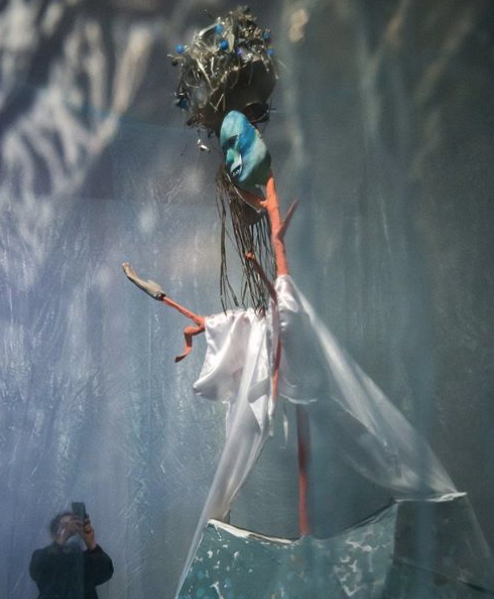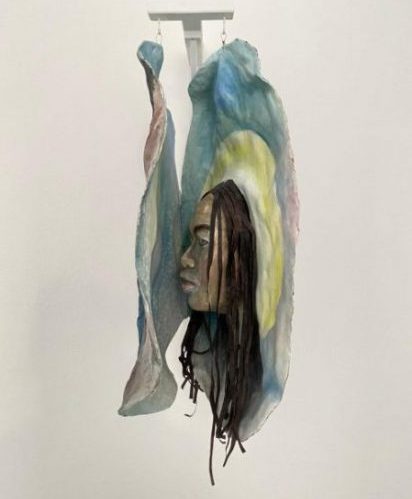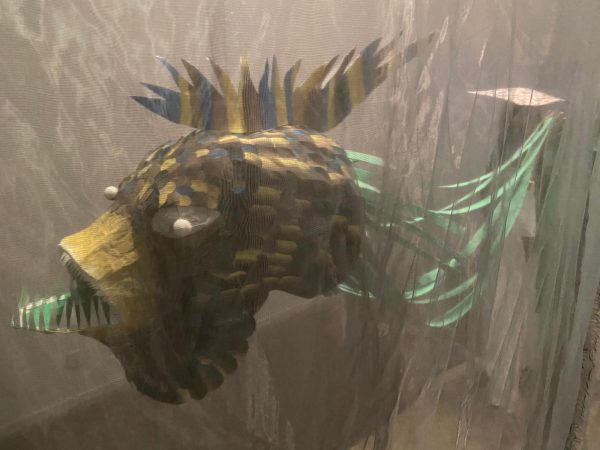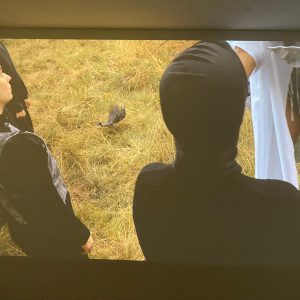The Salty Testament: an underwater experience for a rainy day
Agnes Scherer @ 1646
Those who grow up around religious rituals or iconography can often find its influence in the most mundane of things. In her exhibition at gallery 1646 in The Hague, Scherer presents not just its influence, but a new mythology and a deliberate underwater re-reading of the profound.
Set in three parts, our first encounter (below left) is a towering wall of water. Behind, opaque, irradiant cloth, a two-headed Jesus plays the role of a siren, leading divers to their death. I read the Final scene of the Salty Testament (Gethsemane) as a warning of discipleship but it can equally be understood as the disappointment of the prophet. Though I had to do some research to remind myself of the biblical allegories, in the story of Gethsemane, the disciples let Jesus down by being unable to stay awake while he prayed. In this reworked scene, both the start and end of the exhibition, Jesus is responsible for the fall of the disciples, and not the other way round.


Moving through the exhibition, in a small, unnamed installation (at least, unnamed in the accompanying exhibition booklet), Jesus can be found in the heart of the clam (above right). The clam is a symbol I know from my father’s many efforts walking the usually-religious Camino pilgrimage. It can be understood to represent the womb of the Virgin Mary with Jesus as the pearl – water’s gold – within.
We first meet Christ the healer in Healing of a fish, another tale in this new underwater mythology. Whereas in the bible, Jesus broke bread and fish to feed the thousands, here, he heals a fish of two parts (below).


The divers/disciples return to aid Jesus’s Healing of a madwoman in a film at the far end of the gallery. Traditionally, the story goes that Jesus healed a madman, but here, the madwoman is played by the artist in a video that replaces the originally-planned performance, and at the same time, becomes a piece of art in its own right. Jesus billows in his flowing robes and seaweed as he strips demons one by one from the madwoman, who, fittingly, moves with crab-like gestures. In the end, the healed woman and the disciples receive communion, marshmallows, the body of Christ, from a clam.
Images by Arjan Mook, CC BY-SA (2020)
The soundtrack is simple (recorders and percussion) but effective. I found the driver-disciple playing two recorders fascinating. Watching the film a couple of times is recommended. At this point I also recommend a full reading of the exhibition conversation between Scherer and Gijs Frieling, artist and senior art advisor for the Dutch State architect. This, as the curators of 1646 point out, provides a great opportunity to dig deep into the artist and work’s many influences.
The theatricality of the exhibition hints at the performance that we might have had, had Corona not got in the way. Tellingly, it reinforces the fact that we all need to have our myths and beliefs challenged sometimes.
The Salty Testament – Part 1: Melancholy of the Apostles by Agnes Scherer can be seen until 15 November 2020 at the 1646 gallery in The Hague.



